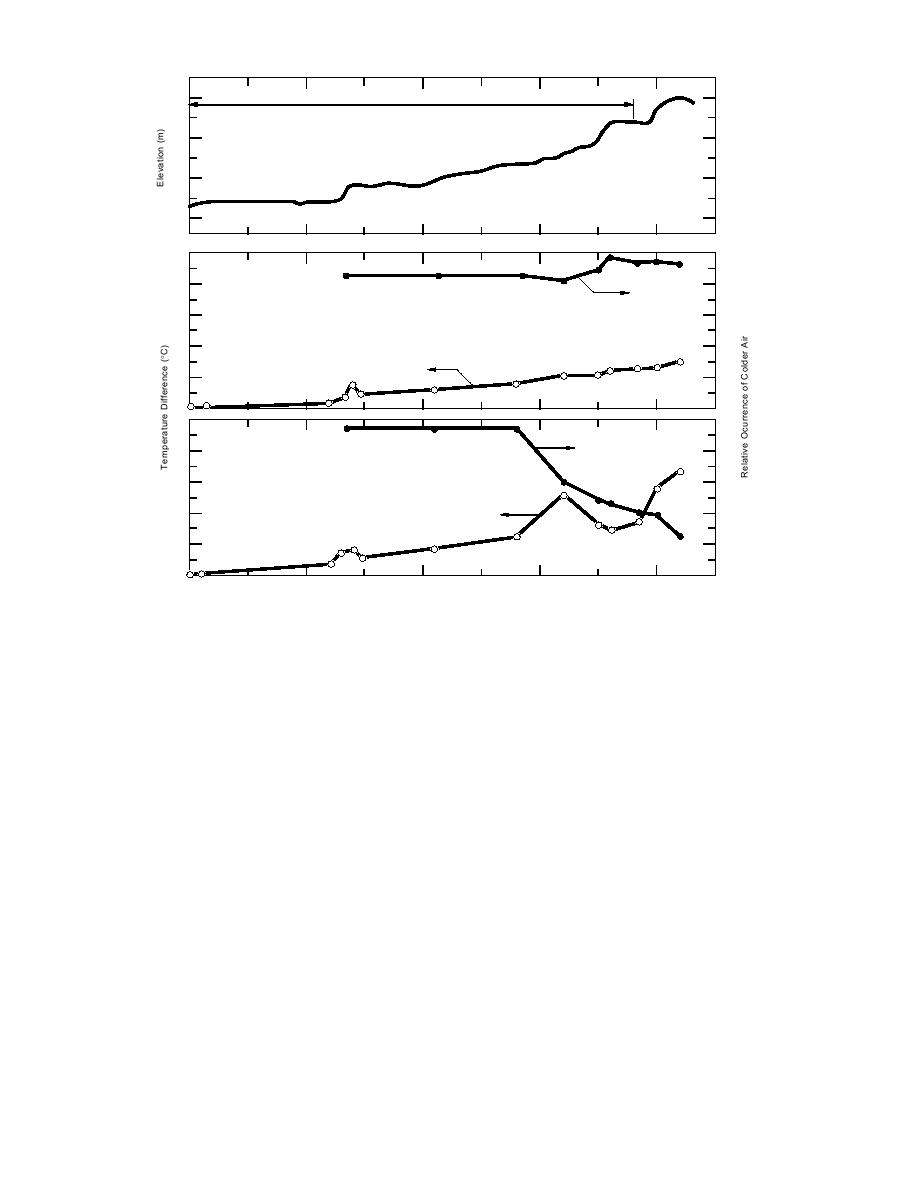
A
Chord: 6.5 km
400
300
W
200
100
Basin IV
III
II
I
P
kqfj
uw
e
d
c
1.0
10
Lapse
0.8
8
6
0.6
4
0.4
2
0.2
0
0
10
1.0
Inversion
8
0.8
6
0.6
4
0.4
2
0.2
0
0
0
2
4
6
8
Projected Distance (km)
Figure 13. Eighty-fourth percentile of temperature difference, and frequency of lesser temperature
with respect to P, along the path PWA.
230 m are decoupled from tropospheric advec-
temperature diminishes as elevation increases
tion on many winter mornings, allowing the Con-
above the W level.
necticut River Valley to experience colder air than
The analyses in Figures 12 and 13 indicate the
the summit of Mt. Washington.
frequency of greater temperature difference, and
Air temperature structure above this persis-
the geometric standard deviation of temperature
tent inversion base was dependent on the conti-
difference with respect to the lowest point in the
nuity of snow cover during the observation period,
valley (P), increase at elevations greater than 230
as shown in Figure 11. A point (c in Fig. 9) in the
m. The frequency of lesser temperatures with re-
Clay Hollow basin (I) has a lesser air temperature
spect to P diminishes above this elevation under
than points along nearby slopes, and it has a lesser
inversion. This is the most frequent elevation of
temperature than the lowest point P on 0.4 of inver-
the inversion base in winter.
sion days. This small basin had the coldest air tem-
Recombining the data subsets of Figures 10
perature in the study area on several days when the
and 11 shows the coldest mean air temperature
apex of observations (A), only 0.6 km distant, had
occurred near W in basin II at 230 m. This is
the warmest air temperature. The basin-slope tem-
coincident with the minimum value of GSD of
perature differences observed along PWA are
temperature difference in Figure 12 and the in-
similar to those found near Moshiri by Nakamura
flection in frequency of colder air temperature in
and Magono (1982), Magono et al. (1982), Maki
Figure 13. These statistical arguments can be sum-
and Harimaya (1988), and Maki et al. (1986).
marized with the statement that air below 230-m
The same stability and snow cover character-
elevation is least influenced by advective warm-
izations were applied to stratify air temperature
ing on winter mornings. The layers at or below
17



 Previous Page
Previous Page
